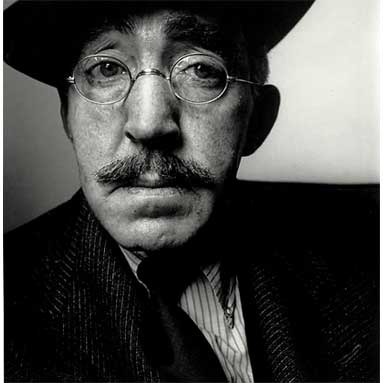Since 1964, Penn has printed new work and reprinted earlier negatives in platinum palladium, an esoteric process in which photochemistry is painted onto drawing paper. The degree of control this permits has made him one of the great master printers in the medium's history.
 The complex relationship between commerce and art in Penn's career is reflected in the number of genres in which he has worked. Each has been a balance or counterpoint to the others, and only by looking at their individual significance can viewers appreciate the cumulative power of Penn's photography.
The complex relationship between commerce and art in Penn's career is reflected in the number of genres in which he has worked. Each has been a balance or counterpoint to the others, and only by looking at their individual significance can viewers appreciate the cumulative power of Penn's photography.Portraiture. When Penn began doing celebrity portraits as a young and relatively unknown photographer, the face-to-face confrontation with his famous subjects was so unnerving to him that he wanted to find something else, besides the camera and himself, for them to react to. Of various simple settings he devised for this purpose in the late 1940s, the most inventive was a tight comer in which his subjects appeared trapped.
Opinion
I feel as if Penn's full body shots are not as successful as his up close portraits. When I'm in a subject's face I can see their eyes and can get a larger sense of what they are thinking and feeling. I don't really care for all the long full bodied images where the subject is aloof and doesn't seem to care that they are being photographed. Yes, full shots can be amazing images, however, I want my images to say something about the person who is being photographed as well as speak about me as an artist.


No comments:
Post a Comment